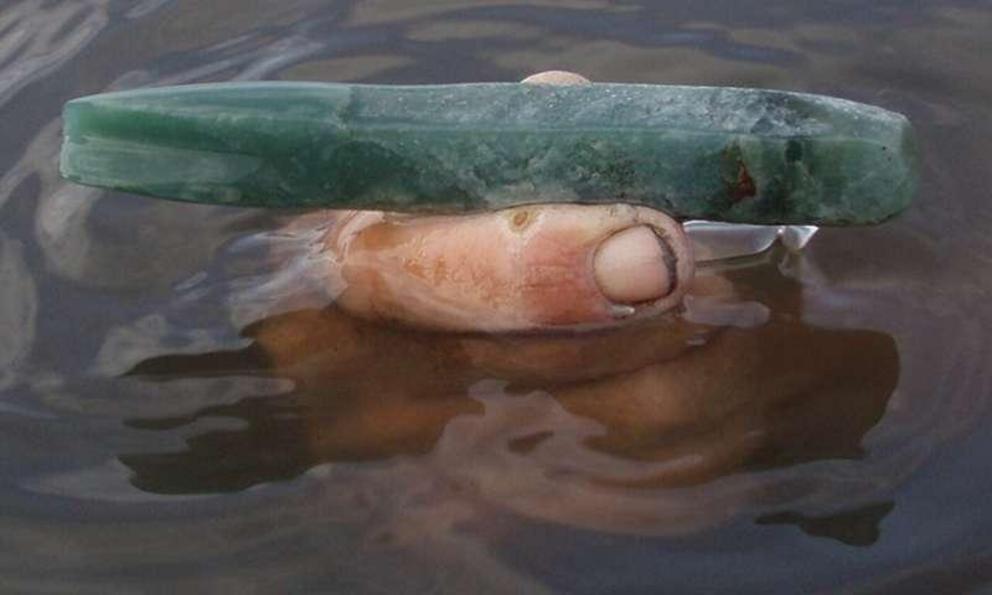High-quality jadeite tool discovered in underwater ancient salt works in Belize
Anthropologists discovered a tool made out of high-quality translucent jadeite with an intact rosewood handle at a site where the ancient Maya processed salt in Belize. The discovery of these high-quality materials—jadeite and rosewood—used as utilitarian tools, demonstrates that salt workers played an important role in the Classic Maya marketplace economy more than 1,000 years ago.
"The salt workers were successful entrepreneurs who were able to obtain high-quality tools for their craft through the production and distribution of a basic biological necessity: salt. Salt was in demand for the Maya diet. We have discovered that it was also a storable form of wealth and an important preservative for fish and meat," said lead researcher and anthropologist Heather McKillop, who is the Thomas & Lillian Landrum Alumni Professor in the LSU Department of Geography & Anthropology.
Jadeite is a hard rock that varies from translucent to opaque. During the Classic Period of A.D. 300-900, high-quality translucent jadeite was typically reserved for unique and elaborate jadeite plaques, figurines and earrings for royalty and other elites. However, McKillop and colleagues recovered the jadeite tool at the site of an ancient salt works in southern Belize called Ek Way Nal. This site is part of a network of 110 ancient salt working sites covering a 3-square-mile area McKillop discovered in 2004.
These sites are located in a saltwater lagoon surrounded by mangrove forest. Sea level rise has completely submerged them underwater and the soggy mangrove soil, or peat, preserves wood, which normally would decay in the rainforest of Central America.
 The jadeite tool handle made of high-quality Honduras rosewood.
The jadeite tool handle made of high-quality Honduras rosewood.
"This jadeite tool is the first of its kind that has been recovered with its wooden handle intact," McKillop said.
Analysis of the wood's structure shows that the handle is made from Honduras rosewood. The jadeite gouge was analyzed at the American Museum of Natural History in New York to determine the object's chemical composition and mineral phases. This study was published in the journal, Antiquity, last month.
Although the jadeite tool was probably not used on wood or hard materials, it may have been used in other activities at the salt works, such as scraping salt, cutting and scraping fish or meat, or cleaning calabash gourds, McKillop said.
More information: Heather McKillop et al, Demystifying jadeite: an underwater Maya discovery at Ek Way Nal, Belize, Antiquity (2019). DOI: 10.15184/aqy.2019.35
Journal information: Antiquity
Provided by Louisiana State University

